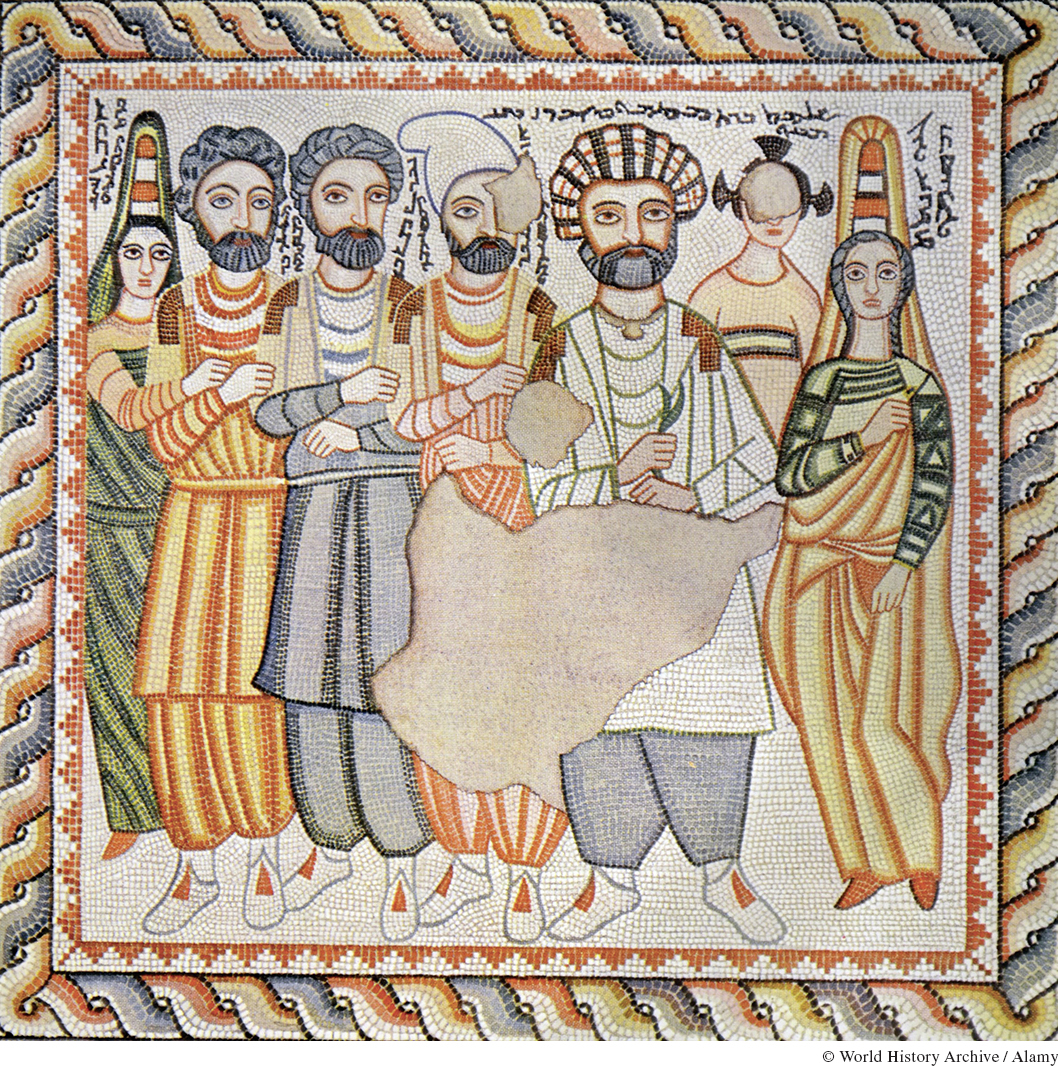
Mosaic of a Family from Edessa
This mosaic, found in a cave tomb from c. 218–238 C.E., depicts an elite family from Edessa in the late Roman Empire. Their names are given in Syriac, the dialect of Aramaic spoken in their region, and their colorful clothing reflects local Iranian traditions. The mosaic’s border uses decorative patterns from Roman art, illustrating the combining of cultural traditions in the Roman Empire. Edessa was the capital of the small kingdom of Osrhoëne, annexed by Rome in 216. It became famous in Christian history because its king Abgar (r. 179–216) was the first monarch to convert to Christianity, well before Constantine. The eastern Roman emperors proclaimed themselves the heirs of King Abgar. (© World History Archive / Alamy.)